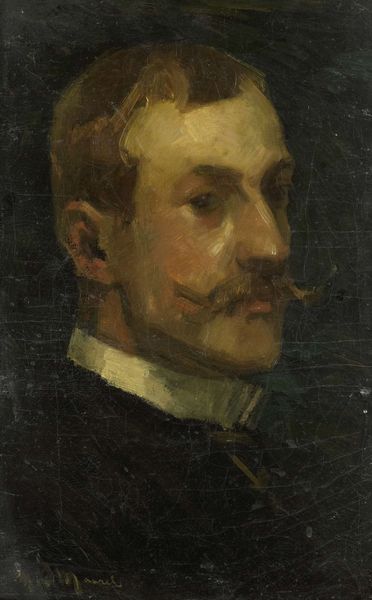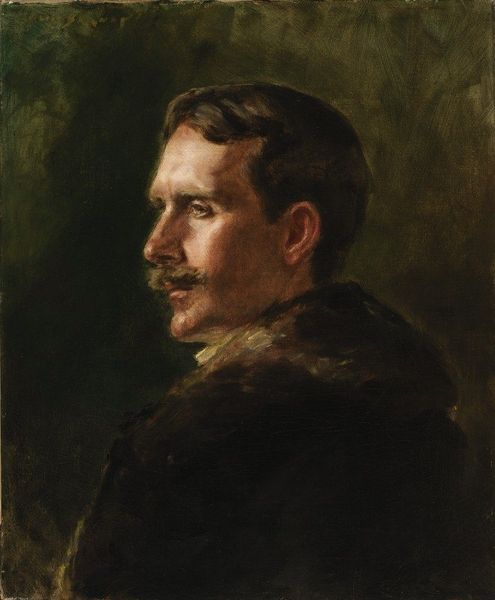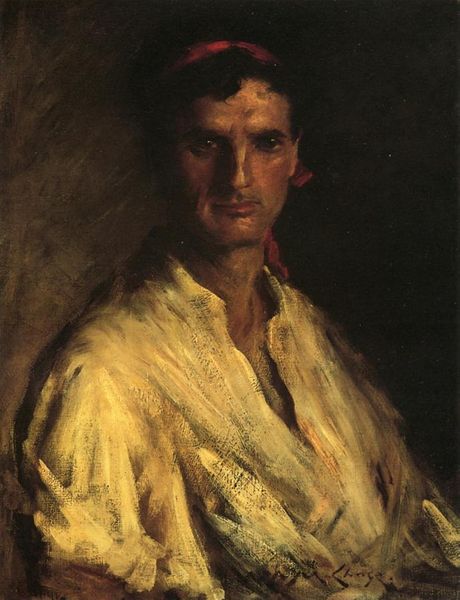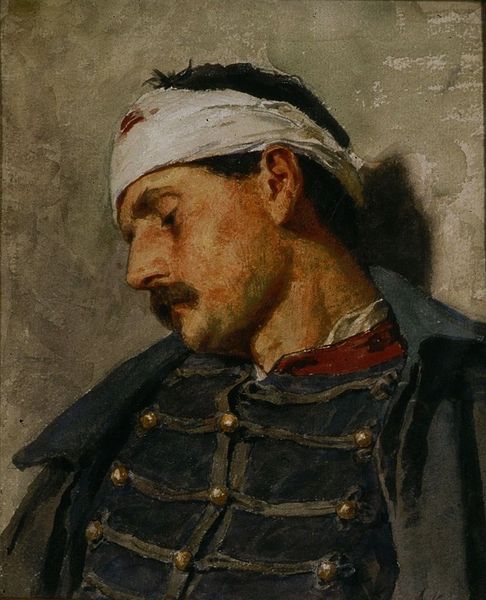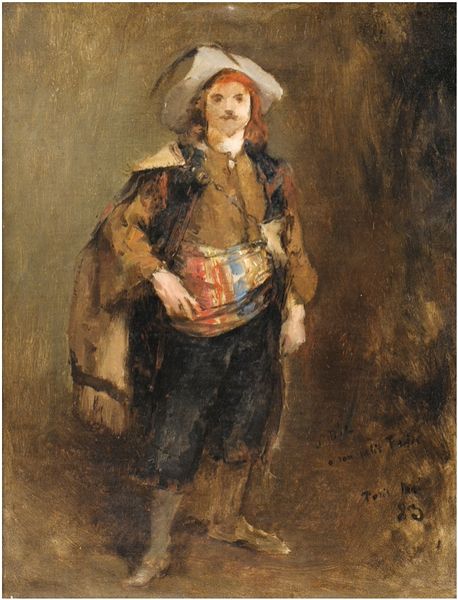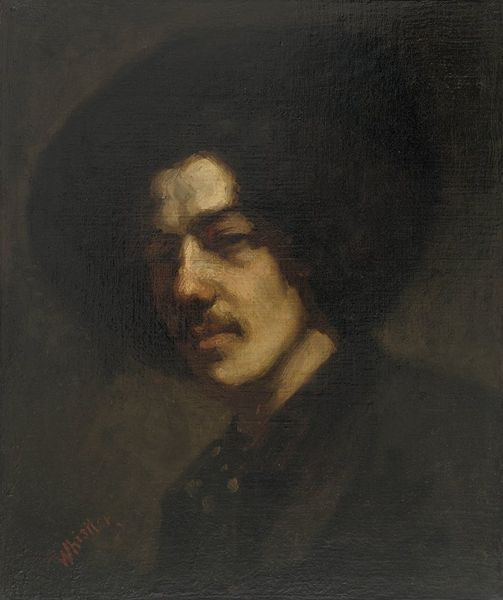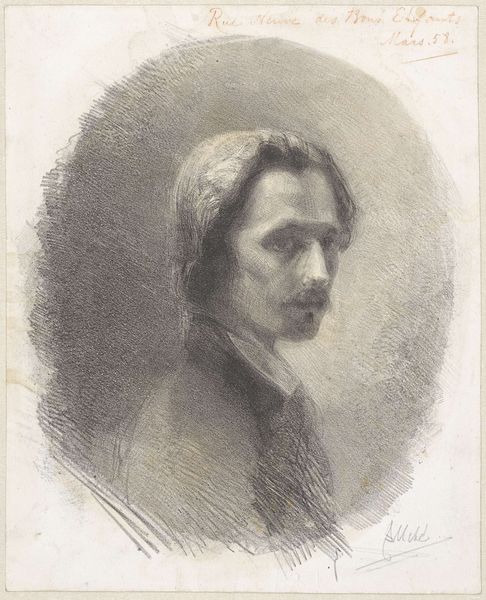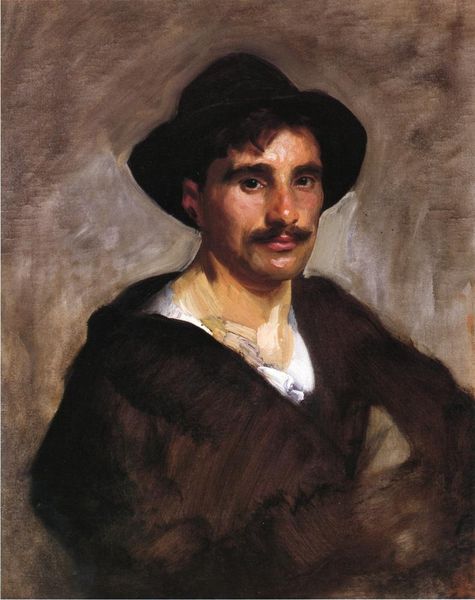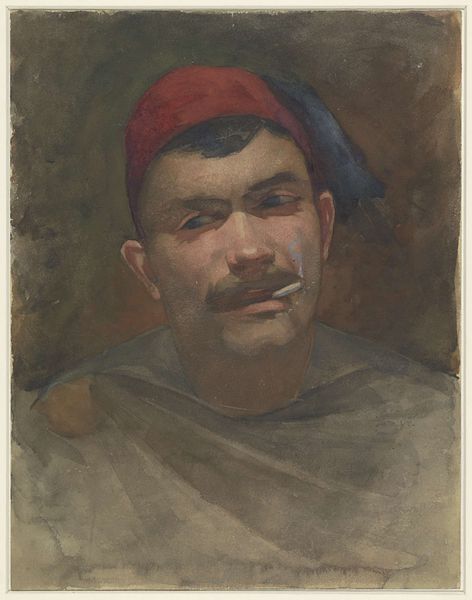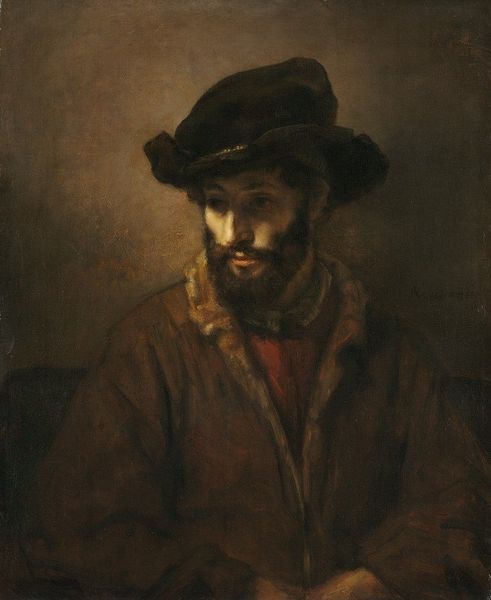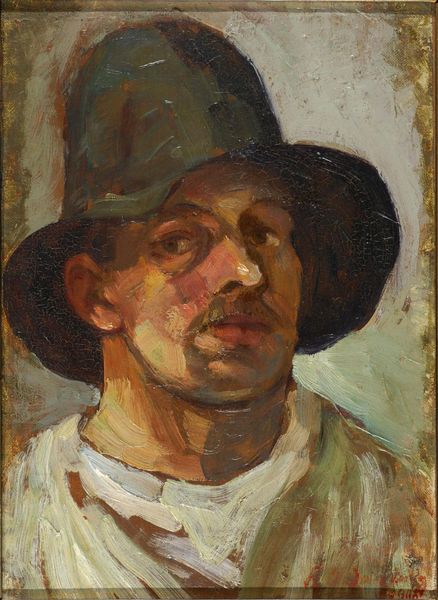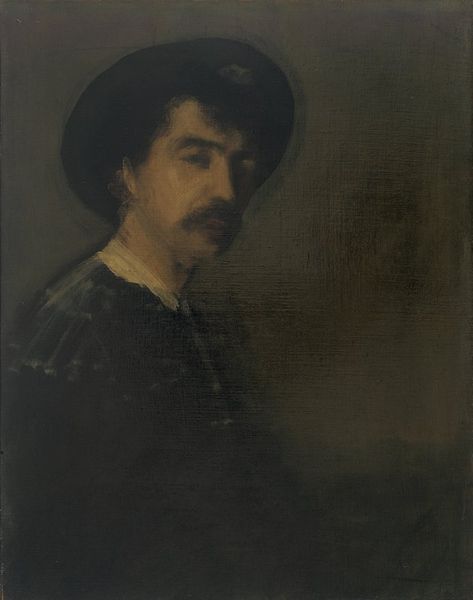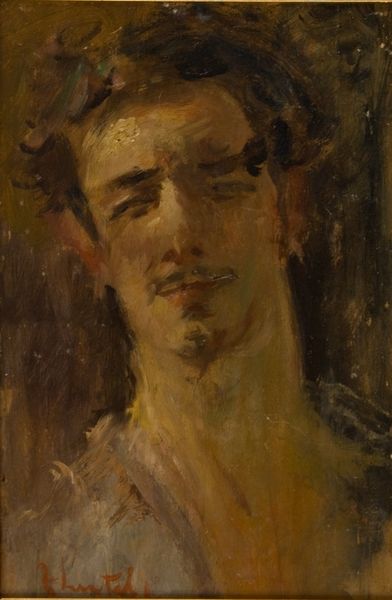
Copyright: Public Domain: Artvee
Mariano Fortuny Marsal, a Spanish artist, painted this oil on canvas titled "Bust of a Man. Allegory of Bacchus" in the mid-19th century. The painting is more than just a portrait; it’s a symbolic representation rooted in classical mythology. Bacchus, the Roman god of wine, fertility, and theatre, was often associated with revelry and ecstasy. Fortuny Marsal uses the figure of Bacchus to explore themes of passion and artistic inspiration. In 19th-century Spain, a period marked by social and political upheaval, artists looked to classical themes to comment on contemporary life. Allegories like this one allowed artists to express complex ideas about society and culture while navigating the constraints of the art world. To fully appreciate this work, one must delve into the cultural and historical context in which it was created. Examining period literature, art criticism, and the artist’s biography can provide deeper insights into its meaning.
Comments
No comments
Be the first to comment and join the conversation on the ultimate creative platform.

